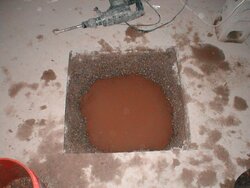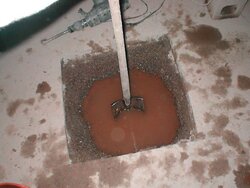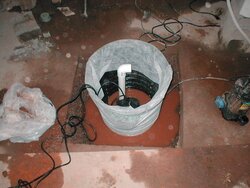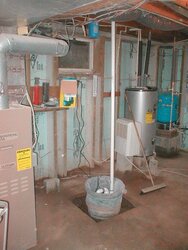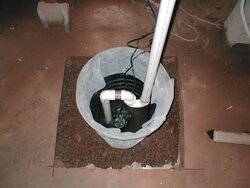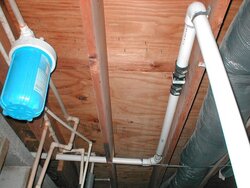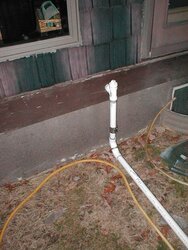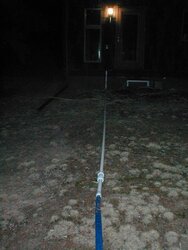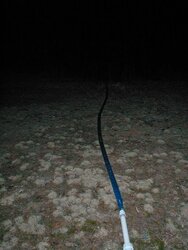Has anyone here had standing water in basement problems due to lack of, or properly installed drain tile around the foundation?
I have had water come in from the floor 3x in the last week and 1/2. One neighbor told me he thinks original owner did not install drain tile.
I have a big hill out back, and am thinking of starting with a deep 6'-8' or so trench with drain pipe & stone up to about 18" from surface level.
My neighbor has a mid sized excavator that I am able to use. I will learn how to use up above the hill with a test trench and some drain pipe & stone.
I am a lil weary bought digging round the basement walls. I have Superior walls and they have crushed stone underneath, no cement footing. From what I understand the stone cannot be disturbed for fear of loosening stone footprint under the walls. I am thinking it may be possible to dig out and lay it 1'to1-1/2' away from the walls.
I would like to hear from anyone who has performed this, and/or anyone else with Superior wall system.
I have had water come in from the floor 3x in the last week and 1/2. One neighbor told me he thinks original owner did not install drain tile.
I have a big hill out back, and am thinking of starting with a deep 6'-8' or so trench with drain pipe & stone up to about 18" from surface level.
My neighbor has a mid sized excavator that I am able to use. I will learn how to use up above the hill with a test trench and some drain pipe & stone.
I am a lil weary bought digging round the basement walls. I have Superior walls and they have crushed stone underneath, no cement footing. From what I understand the stone cannot be disturbed for fear of loosening stone footprint under the walls. I am thinking it may be possible to dig out and lay it 1'to1-1/2' away from the walls.
I would like to hear from anyone who has performed this, and/or anyone else with Superior wall system.


 .
.
